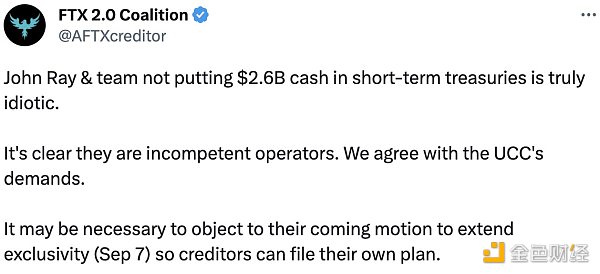Gu Yanxi: Libra Association will invite WeChat payment and Alipay to join
All of the analysis of the Facebook Stabilization Coin project to date has underestimated the role and value of the Libra Association in this project. I think this association is the biggest highlight of this project. The project's highlights in this underlying technology, currency generation mechanism, and potential user base are far less than the organizational mechanisms of this organization. Libra's organizational mechanisms and its members are far more effective in promoting this stable currency project than Facebook's 2.7 billion users worldwide.
Written by: Gu Yanxi, a multi-year practitioner in China and the US financial market, a researcher and practitioner of blockchain and encrypted digital assets, served as the deputy director of information technology at Huatai United Securities and several financial services companies COO, once served in the United States An option settlement company that provides clearing services for all options trading in the United States.
Basic technology
On the technical side, there is no qualitative difference between the underlying mechanisms of the blockchain technology that support this stable currency operation. And its consensus mechanism uses the Hotstuff released by VMWare a few months ago. One innovation in this area is the introduction of a new language Move. But the new programming language appears in Silicon Valley every few years. Previously it was Google's Go. It is very likely that a new language called Fly will appear a few years later. So in terms of the technical aspects of this project, I fully agree with Ma Huateng's point of view, that is, the technology in this area is very mature. Libra is no more technically superior than other projects.
Currency mechanism
The price of the Libra Stabilizing Coin will be a standard currency. In this respect, it is different from most of the current stable currency against a single legal currency. The benchmarking of the currency will enhance the stability of the stable currency and reduce the volatility of a single currency. This way of marking is similar to the SDR of the IMF. So this way is not a big innovation in itself. In terms of the collateral on which the stable currency is issued, it accepts legal currency and short-term national bonds. This model is also a collateral management mechanism commonly used in financial markets. In terms of the stable currency policy.
- Media: Encrypted currencies reshape the global financial order?
- Three serious naive myths of Facebook coins
- Dialogue with Meng Yan: Facebook sets off a wave of digital currencies
Libra's white paper clearly states that it relies on the central bank policy of the standard currency. In terms of the amount of stable currency issued, the number of issuances is entirely determined by the needs of the market. Therefore, in terms of currency generation mechanism, Libra stable currency is basically a conventional stable currency generation mechanism.
Potential users
In terms of potential users, Facebook does have 2.7 billion registered users worldwide. The advantages of this aspect are indeed obvious. However, specific to the field of encrypted digital assets, the social network used by enthusiasts in this field is Twitter rather than Facebook. Its monthly number of users reached 320 million. About 80% of Twitter registered users are overseas in the US. So if you need to promote a digital financial application on a blockchain globally, Twitter should be a more social network than Facebook.
Organizational mechanism
I think the biggest highlight of this project is its operating organization Libra Association. According to reports, when Facebook began to communicate with potential partners on this stable currency project, these partners clearly told Facebook that it is impossible to join a stable currency project led by Facebook. Facebook has therefore adjusted the organization of the project in a timely manner, using a form of association for non-profit organizations, and is registered in the neutral country of Switzerland.
From the white paper published by the association, the organization and decision-making mechanism of this association is obviously very democratic and fair. From the perspective of the members announced so far, the operation mechanism of this association is indeed very open and fair. Existing members come from related industries outside the bank. Not only that, but also the leading and most direct competitors in the relevant industry joined the organization. Such as credit card companies Visa and Mastercard, retail payment companies PayPal and Stripe, consumer applications companies Uber and Lyft. The addition of these members clearly demonstrates the fairness of the rules of this organization.
From the very beginning, Facebook Stabilization Coin was not a benchmark US dollar, but a benchmark "a basket of French currency." This shows that the purpose of this stable currency is to circulate globally, rather than circulate within the existing dollar power. Since the currency itself is designed for global circulation, the organization that promotes its application should naturally be international rather than limited to economic entities based on the dollar. The current members of this organization are mainly based on American companies. In my previous article ( Reading through Facebook's stable currency, Libra, to understand its mechanisms, opportunities, and challenges ), I said that the current members of the association are more like "all-American team without banks."
This is because most of the founding members are currently American companies. At present, the members of the association's organization reflect more of the characteristics of the founding members, rather than representing all members of the future. The choice of members is definitely to promote the promotion of this stable currency on a global scale. Therefore, the industry-leading companies in related fields are definitely the preferred targets of the association members. In the field of third-party payment in the Chinese language and circulation RMB market, WeChat payment and Alipay are naturally the first choice. Therefore, the Libra Association will invite WeChat Payment and Alipay to join.
Join or not join?
For many companies, joining the Libra Association is an important option. Given the influence of Facebook, the nature of this business, and the membership that has been joined, there are already many companies that have a strong interest in joining. But I believe that not all companies have a clear understanding of this. In this respect, I think at least the following factors need to be carefully considered.
First of all, don't expect this node to generate high profit income. This underlying infrastructure provides infrastructure services, so it is impossible to charge a high fee for this service. For the common interests of all node companies, this underlying should not be very expensive, as this will affect the profitability of their respective businesses. For a node company, its source of profit should be the business operating income based on this. This network also does not have the power to leverage the additional currency, so it cannot obtain excess returns based on the limited amount of stable currency.
In addition, since this network is a regulated financial infrastructure, it is also impossible to distribute stable coins between nodes at random. A company does not need to be a node to conduct business on this network. This network serves all companies, so it welcomes any company to do business on it. I think the biggest privilege of becoming a node is to influence the business decisions of this financial infrastructure. And this decision-making power is very important for many companies. If a company only considers revenue, becoming a node of this network may not be the best choice.
The same funding application in other areas may yield higher returns. For some of the more powerful companies, it is also a strategic choice to develop a product that competes with Libra's stable currency. Given that the stable currency is still at a very early stage in modern times, and the various risks inherent in the Libra Stabilization Coin project, the chances of a stable currency competing in the market are still very large. The last part of my previous article also did some analysis of the competitive stable currency scene.
From the perspective of product development in any industry, each product category will eventually be monopolized by two products, as will the global stable currency products. However, given the global nature of stable currency products, any company considering developing competitive products must consider whether it can promote this stable currency globally. Among all the factors that influence the spread of stable coins, the ability of institutions and governments around the world to accept this stable currency is of paramount importance. If a company does not have the ability to do this, it is best not to get involved in the field of stable coins.
If you appreciated the article, welcome to forward, also welcomed the support of the following ways:
- Bitcoin: 1LiJFeSDXFqe9U8UzVTj8FZkFn1oabAHtR
- Ethereum: 0x9B2D57BB1e3B44b5FD386A956DC28fE4E82f1326
We will continue to update Blocking; if you have any questions or suggestions, please contact us!
Was this article helpful?
93 out of 132 found this helpful
Related articles
- Babbitt column 丨Chen Zhiwei: Libra technical papers make people feel full of sincerity
- Resource aggregation in the PoS era, cloud service provider contract node work
- The first 5G+ blockchain traceability platform landed, and a century-old multinational company Cargill took the lead in testing water?
- The king of money returns to $10,000, what makes it stand still?
- Online Salon: Privacy Security Computing, Value Geometry?
- Libra: The ambition of the social empire Facebook
- Billion International Hong Kong failed to list: a new round of bitcoin rose failed to rescue the third largest miner






